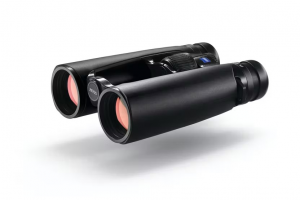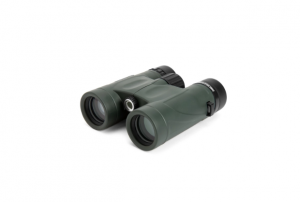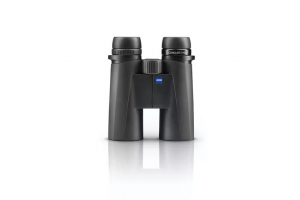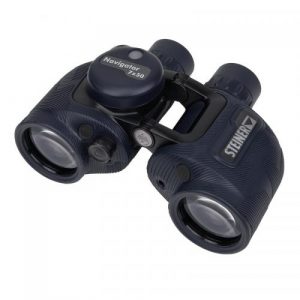
When you want to get up close to the world around you for things beyond your “Naked Eye” vision, binoculars are usually the 1st optic of choice. However, what is a good binocular, what sort of binoculars suit different applications ?
There are few binoculars that work well in ALL situations. So we hope this will help guide you in finding the binoculars that suits you and your circumstances.
Factors that determine which binoculars will work best for you:
Purpose – No one binocular does everything in all circumstances, so decide what their primary use is going to be.
Magnification – How much detail do you need to see? For example, reading small writing or fine details at a distance requires a larger magnification.
Aperture– Or, the size of the lens at the front of the binoculars, which determines the amount of light gathered by the binoculars.
Image Quality– this will be largely determined by lens and prism quality
Binocular type – The 2 main types being Porro Prism and Roof Prism Design’s.
Build quality– this will affect both the functionality & longevity of your binoculars
Budget– What is your realistic budget as this will determine the compromises you may need to make.
Portability– The size and compactness of the binoculars. This also affects budget as more compact binoculars are generally more expensive.
Warranty and serviceability – Do you want a set for life, or is 5 years OK ?
Functionality – How they feel in the hand (comfort) , focuser operation, diopter eyecups, and how they look.
Warning – Binoculars to avoid !
Binoculars with “Ruby coated” lenses, no stated prism type (usually inferior glass) & zoom binoculars (EG: 6 to 25x) magnification. The build quality will usually be poor, the views terrible, especially at high zoom. these are the type you will usually see at your local discount store and seem like a bargain at under $50. However just like cheap telescopes are “worse than nothing at all” what we like to call “Hobby Killers”, bad binoculars are just the same.
Purpose:
The Magnification, Aperture, Size & Stability of binoculars will determine their suitability for a particular task. We will deep dive into those features in this article, however here is a general guide.
- Astronomy Bino’s generally need aperture to gather feint starlight so 10×50 or even 15×70 Porro prism are popular and effective
- Birdwatching requires good clarity, portability and moderate light gathering, plus close focus at times so 8 or 10 x 42 ED Roof prism are most popular
- Marine applications require good aperture for low light, stability & ruggedness in a wet and moving environment so 7×50 “Marine” Porro are the binoculars of choice.
- All Round bino’s can be found, and the 8×42 ED nicely fills this spot. Not forgetting the image stabilised Binocular that is stunning in almost ANY environment !
Magnification and Aperture:
This is represented by the stated size of the binoculars. Eg: 8×32(see figure 1)
The first number represents magnification (8). This determines how much detail you can see, especially at mid to long distances. Magnification can range between 6 and 25. With 15x bringing the highest practical magnification that can be handheld (under the right circumstances). Any more than 15x magnification is too difficult to hold steady without mechanical support (e.g. a tripod or Monopod) or the Purchace of “Image Stabilised” binoculars.
The last number represents Aperture (42) which is the diameter of the lens. This determine how much light reaches your eyes. This can be anywhere between 20mm and 150mm. Larger aperture such as 50 or 70mm are great for astronomy or long distance viewing.
BOTH numbers will determine what application the Binocular is best suited to.

Image quality:
The quality of the image, that is to say the colour correctness, image sharpness across the field of view, contrast between dark and light, depth perception & field of view width are your main considerations.
This is determined by a number of factors, the first and most important being the prism glass material, separating cheap and ineffective binoculars from those of higher quality. BK4 glass is needed to provide clear and sharp images across the field of view. BK7 is the inferior quality glass used in cheap binoculars (usually under $100).
Roof prisms are a compound design, mirror coated with Aluminium, Silver or Dielectric coatings, each giving successively greater light transmission. Beyond entry level binoculars the prisms should be “Phase Coated” which give a noticeable improvement in contrast and image brightness.
The prime or objective lens coating is of great interest. Binoculars should fully multicoated (FMC) as a minimum. Beyond this, ED (extra low dispersion) glass prime lenses are the best, dramatically reducing chromatic aberration (false colour) often these binoculars will have hydrophobic (water repelling) coatings as well (see figure 2 below).

Figure 2- ED glass Zeiss conquest 10×42 Binoculars
Binocular Type:
The two main types of Binoculars are Porro Prism (full size) and Roof Prism (compact)
(see figure 2 above).
Porro prism binoculars are generally less expensive & have full light transmission due to their regular BK4 glass, uncoated prisms. However, most Porro prism binoculars do not come with the ED glass objective lens and phase corrected coatings that advanced Roof prism Bino’s come with as standard.
Roof prism binoculars are more compact, portable and lighter but require Sophisticated coatings (Aluminium, silver or Dielectric) to make their compound prisms work as well as standard Porro prism binoculars, adding to their cost in the high-performance models. As previously mentioned these enhanced features means that the best performing binoculars are going to be advanced roof prism vs Porro prism Bino’s.
Figure 3- Porro vs Roof
Build Quality:
This will affect the capabilities of the binocular’s focus, smoothness of the eyecup pop-up action, hinge functionality, prism stability in adverse conditions , waterproof (IP)rating, the ruggedness of the body and the quality of the outer skin material.
Budget:
If you have under $100 to spend you are generally looking at a non-waterproof & optically inferior BK7 prism model.
Around the $200 – $300 mark, there are a wide variety of quality, full-size (Porro Prism) or entry level roof prism (FMC) binos available.
$300 to $450 will get you phase corrected roof prism binoculars ideal for the keen observer of the natural world on a budget.
$500 and above, your binoculars should have ED glass lenses & close focus capability (as close as 2m) – You will find this in Brands such as Vanguard, Bushnell, Celestron, great for birdwatching in the high contrast lighting situations where lesser optics will show false colour due to Chromatic aberration. Or for the bigger aperture 10x50mm they make a superior Astronomy Binocular.
Examples:
Bushnell Forge 10×42 Binoculars
Price: Circa $1000
Beyond that you can expect highly regarded brand names such as Steiner & high end Bushnells, with long warranties and excellent build quality. That’s in addition to all of the top end features previously mentioned such as FMC lens, dielectic prism mirrors, phase corrected, highly shockproof which should be included.
Brands such as Fujinon & Canon have a range of electronically controlled gyroscope stabilised binoculars capable of delivering high powered clear and sharp views up to 16x.
Above this price range ($2000+) are some of the most highly regarded brands of uncompromising optical & build quality such as Zeiss, Swarovski, Nikon (EDG), Leica & Steiner (Wildlife) built to last a lifetime.
Example:

Zeiss Victory 10×42
Portability Considerations:
Clamshell:
The most portable design is the “Clamshell” where the 2 barrels fold in on the central bridge and focuser.
One of the best examples of this type of Bino is the Steiner Safari series (below), one of our most popular ultra portable Bino’s with quality optics.
The optics are very satisfying but the downside is smaller aperture 22 to 28mm generally.
Compact Roof Prism:
Most commonly seen as a 8×32 combination and available as a size variant on most models of roof prism Binoculars this suits the person with smaller hand or who is very weight conscious for both using & transporting the Bino.
In the higher end models they can outperform mid priced full sized roof prism Bino’s.
Vanguard Endeavour 2 – 8×32
Full Sized Roof Prism:
This size includes 8×42 & 10×42 with a a few brands going up to 44mm Aperture. Typically around the 600 to 700g in weight.
The big advantage is the aperture and light gathering ability that gives.
Examples are the previously shown Bushell & Zeiss Bino’s.
Porro Prism:
These are the true Full sized binoculars being heavier and larger. So why would you use them ? For Astronomy they have generally larger aperture and naturally higher light transmission due to their prism design without the required mirror coatings needed in roof prism Bino’s. Their weight is typically 800g plus so semi portable.
however in Marine applications they are still the standard and optically excellent in the high end models with superior prime lenses.

Warranty and serviceability:
– Do you want a set of Bino’s for life, or is a few years just fine ? Waterproof & Nitrogen purged is our minimum recommendation, this will give many years of service in its own right. Beyond this it comes down to the quality of the seals, the construction of the pop up Eyecups (alloy is best), the quality of the focus mechanism & the durability of the “Skin”, which is the rubber armour around the Bino’s.
Warranty varies from 1 year to unconditional lifetime warranty (usually 20years) in the higher end Bino’s.
Appearance and Feel:
This is a somewhat more subjective measure. Such as how they balance in your hand, the grip and perhaps even the colour. You can’t beat getting your hands on a pair of binoculars and that’s were we can help with many of the above binoculars in stock in our store with an even wider range of Binoculars available on order from our website .
Whatever you need in a pair of binoculars we are here to help you at Nightskysecrets. Call us on 07 40004091 or call into our store at 321 Sheridan St (Cnr Smith) in Cairns North.
